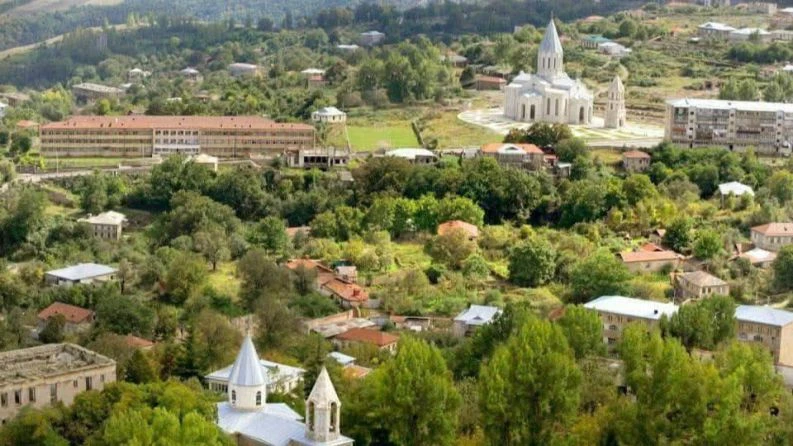The Office of the Scientific and Cultural Heritage of the Historical and Cultural Heritage of the Historical and Cultural Development of Artsakh and the Ombudsman of the Armenian Highlands of the Armenian Highlands has issued an esteem.
"Shushi, as one of the most important historical and cultural and civilized centers of the South Caucasus in general, has been inhabited since ancient times. Throughout its history, Shushi became one of the key centers of building the national, spiritual and cultural identity of the Armenian people. The geographical location of the city contributed not only to its military importance, but also to become a cultural and educational center.
The role and significance of Shushi
• Fortress as an important component of the Armenian statehood and the safe system of the Armenian people.
From the early Middle Ages, Shushi played an important role in maintaining the security of Armenian state units in the territory of Greater Armenia, and in the late Middle Establishment of the Armenian National Organization.
• Cultural center. From the end of the 19th century, Shushi became one of the largest cultural centers in the South Caucasus. Theaters and printing houses have been operated here, newspapers and books have been published, a unique flow of Armenian culture has been formed, which united folk and classical art.
• Education center. Many Armenian schools, gymnasiums and educational institutions have been established in the city, which have contributed to the formation of the Armenian intelligentsia.
• A spiritual center. The Temple of the Holy Savior Ghazanchetsots has become one of the spiritual symbols of the Armenian community of Artsakh and the entire Caucasus. In addition, many churches have been operating in Shushi, which are valuable cultural monuments.
• Political and public center. Shushi also visited the focus of Armenian political and public life, a place of new public trends and national movements.
• Economic development. In the 19th century, Shushi was famous for developed craftsmanship, trade and industry, with its markets and businesses in the region.
Shushi was a symbol of Armenian identity, education and culture in Artsakh and the Caucasus and has been universal, being an important component of global culture and civilization.
The systematic destruction and appropriation of the Armenian cultural heritage of Shushi by Azerbaijan
After the escalation of the Artsakh conflict, especially after the 2020 war. The Azerbaijani authorities have adopted a policy of systematic destruction and appropriation of the Armenian historical and cultural heritage of Shushi, which includes the following directions:
• Physical destruction and damage. The Armenian churches and monuments of Shushi have been damaged and destroyed. In particular, in October 2020, the Holy Savior Church was launched, causing severe damage to its architectural integrity.
• Cultural assimilation. The Armenian heritage is presented as a "Aghvanian" or "Azerbaijani Christian" culture, with the aim of deleting the traces of Armenian identity. This process is often carried out under the renovation of churches, replacing the Armenian image with "Azerbaijani" elements.
• History revision. The Armenian history of Shushi is distorted, Armenian toponyms are Azerbaijani, and the information about Armenian culture is eliminated from official sources.
• City environment modification. Armenian-style structures are being destroyed, replaced by Azerbaijani or Islamic architectural elements, aiming to transform the historic image of the city.
• misleading and propaganda of the international community. Shushi is presented at international platforms as a "capital of Azerbaijani culture", events and festivals are organized, bypassing the Armenian identity of the city.
The above-mentioned actions are fully conformed to the definitions of cultural genocide and are serious violations of international law, contradicting the 1954 Convention on the Protection of Cultural Assets and a number of UNESCO decisions.
Thus, Shushi is an integral part of the civilized heritage of the Armenian people, the role of which cannot be underestimated in the development of universal culture. The actions of the systematic destruction and assimilation of Azerbaijan are endangering not only the cultural heritage of all humanity, but also the cultural heritage of all humanity.
The Scientific Group of the Institute of Historical and Cultural Heritage of the History and Cultural Development of Artsakh and the Ombudsman of the Armenian Highlands Cultural Heritage The Office of the Armenian Highlands call for the international community.
• Active to interfere in the preservation, documentation and restoration of Shushi's Armenian cultural heritage,
• Request Azerbaijan to suspend both in Shushi and,
Cultural policy throughout Artsakh,
• Define relevant legal and political responsibility for Azerbaijan in accordance with international law. "


